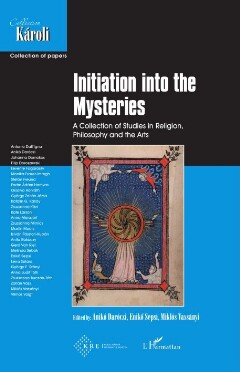Seite 225 [225]
WHICH INITIATION DOES NOT LEAD ÁSTRAY FROM THE IRUE MYSTERIES
examination a true method that would allow the philosopher to find a way
toward a realm beyond mere thought, where mysteries host an unalterable
truth on existence. Furthermore, any initiation into the mysteries (which, for
Schelling, "contain the truth of mythology"?) will necessarily share in that
same wavering status proper to the representations to which (the account of)
these mysteries refer.
B. From Exoteric to Esoteric Mythology:
The Origin of an “Account of Mysteries”
In his lectures on mythology and its mysteries—his Basic Outline of
a Philosophy of Revelation (Urfassung der Philosophie der Offenbarung,
1831-32)—Schelling distinguishes the ceremonial happenings or scenic
occurrences, which are the mystagogical side of the mysteries, from the
knowledge /Erkenntnis] yielded by this praxis, which is the “account of the
mysteries” /Mysterienlehrej, accounting for the truth or the understanding
of them.* In a commentary which refers to Proclus’ commentary on Plato’s
Alcibiades, Schelling states about the purpose of mystagogical praxis—and
by this, about initiation as well—that the fear and trembling (not to speak of
the orgia) emerging from exposure to the phantasmata “must make the soul
receptive to the divine and let the soul sense its future restful state as a higher
blissfulness.” For Schelling, Greek mysteries derive their name (teletai) from
their purpose (telos), anticipating, namely, a future and completed initiation.
This signification is complemented, in Rome, by the term initia (hence:
initiation), referring to a transitional endeavour (Ubergang), understood
as principia of mysteries.° Regarding the knowledge which emerges in
consciousness by mystagogical praxis and actually makes consciousness
itself emerge, Schelling states that mysteries emerge in consciousness at the
moment in the mythological process when exoteric deities figuring in exoteric
mythology become esoteric. He refers, namely, to the moment in which all
materiality and manifoldness are overcome and, through this, consciousness
itself becomes eo ipso possessed in itself by spiritual deities (geistige Gétter).
It is the moment at which in the initiates the real violence (reale Gewalt’)
of mythological necessity on behalf of exoteric deities turns into a state of
inner, free encounter with spiritual deities. This moment represents the birth
of an esoteric account of mysteries. It is important to notice how this esoteric
Mysterienlehre is designed after two matrices:
Urfassung, 36th Lecture, 265.
Id., 40th Lecture, 298.
Id., 40th Lecture, 301.
Id., 41st Lecture 315, also 48th Lecture, 385-386.
40th Lecture 301.
Nn an B® w
+ 223 +
Daréczi-Sepsi-Vassänyi_Initiation_155x240.indb 223 6 2020.06.15. 11:04:21

